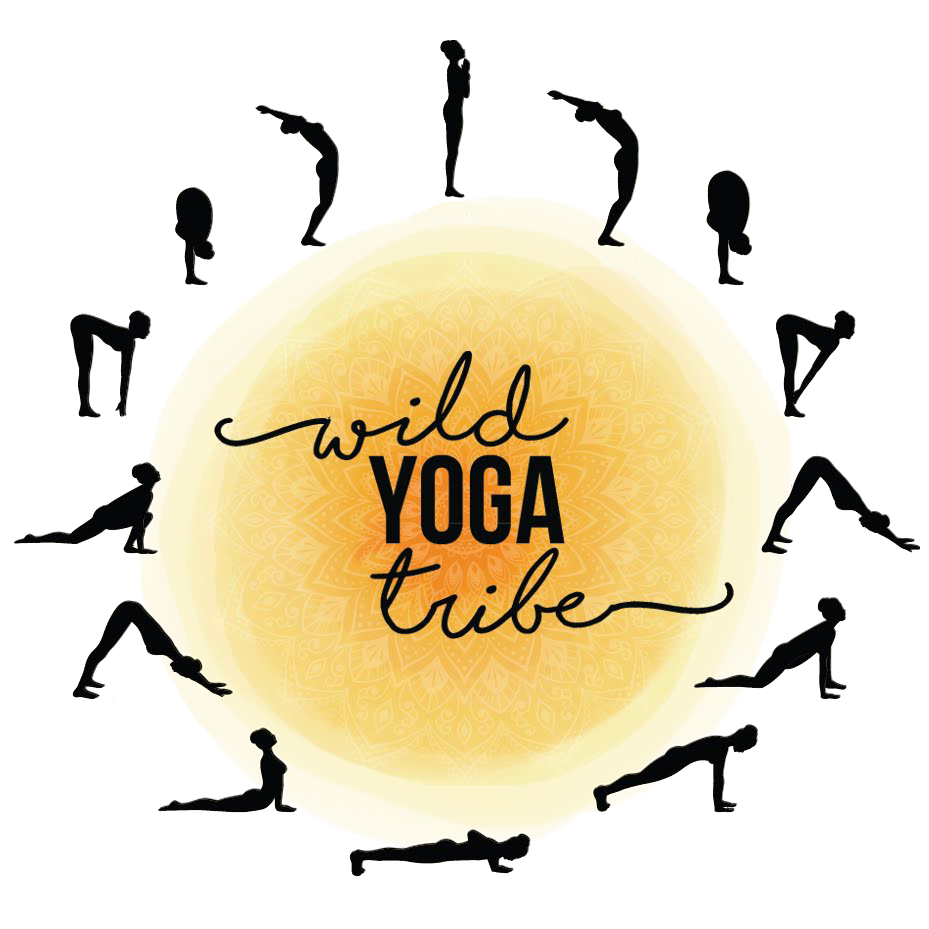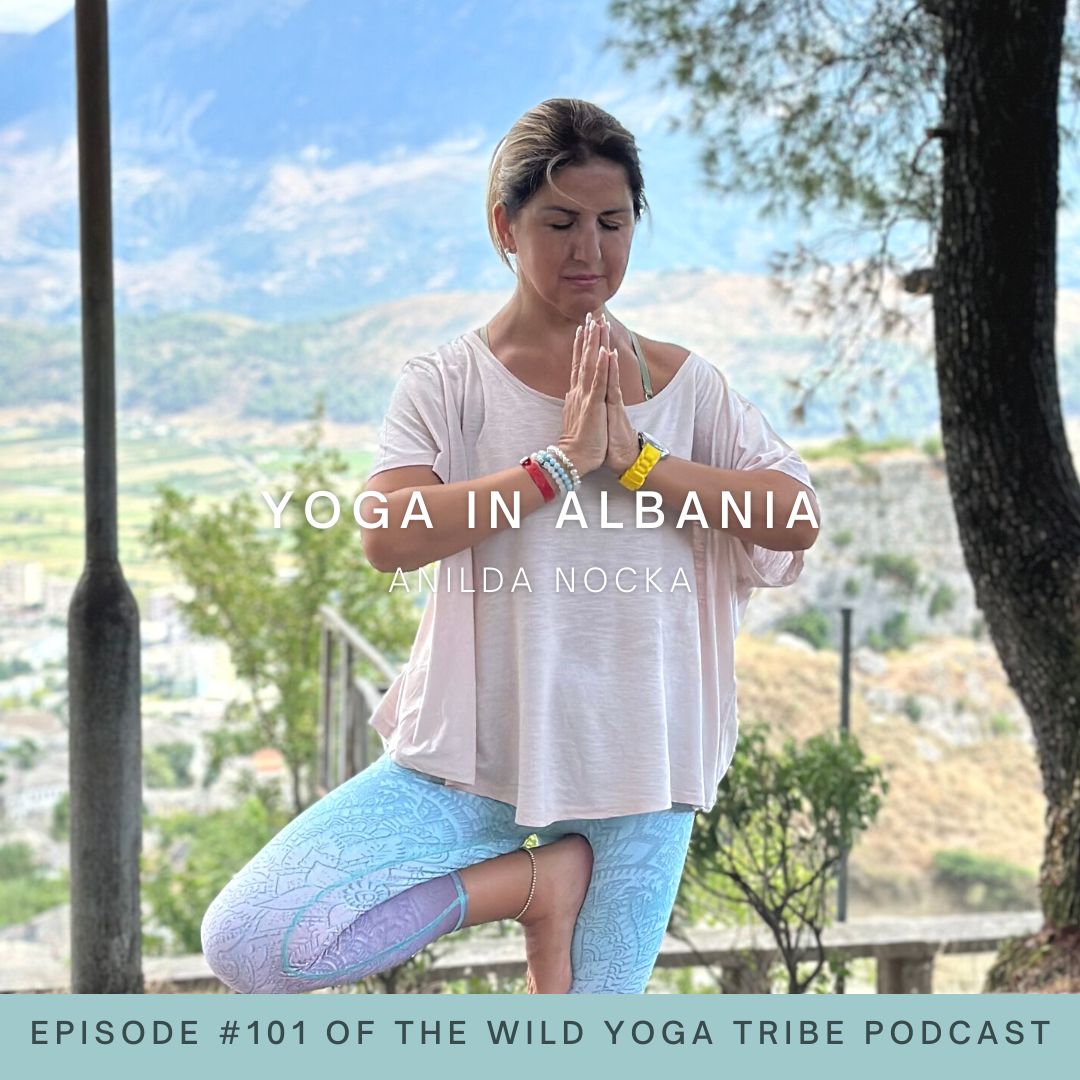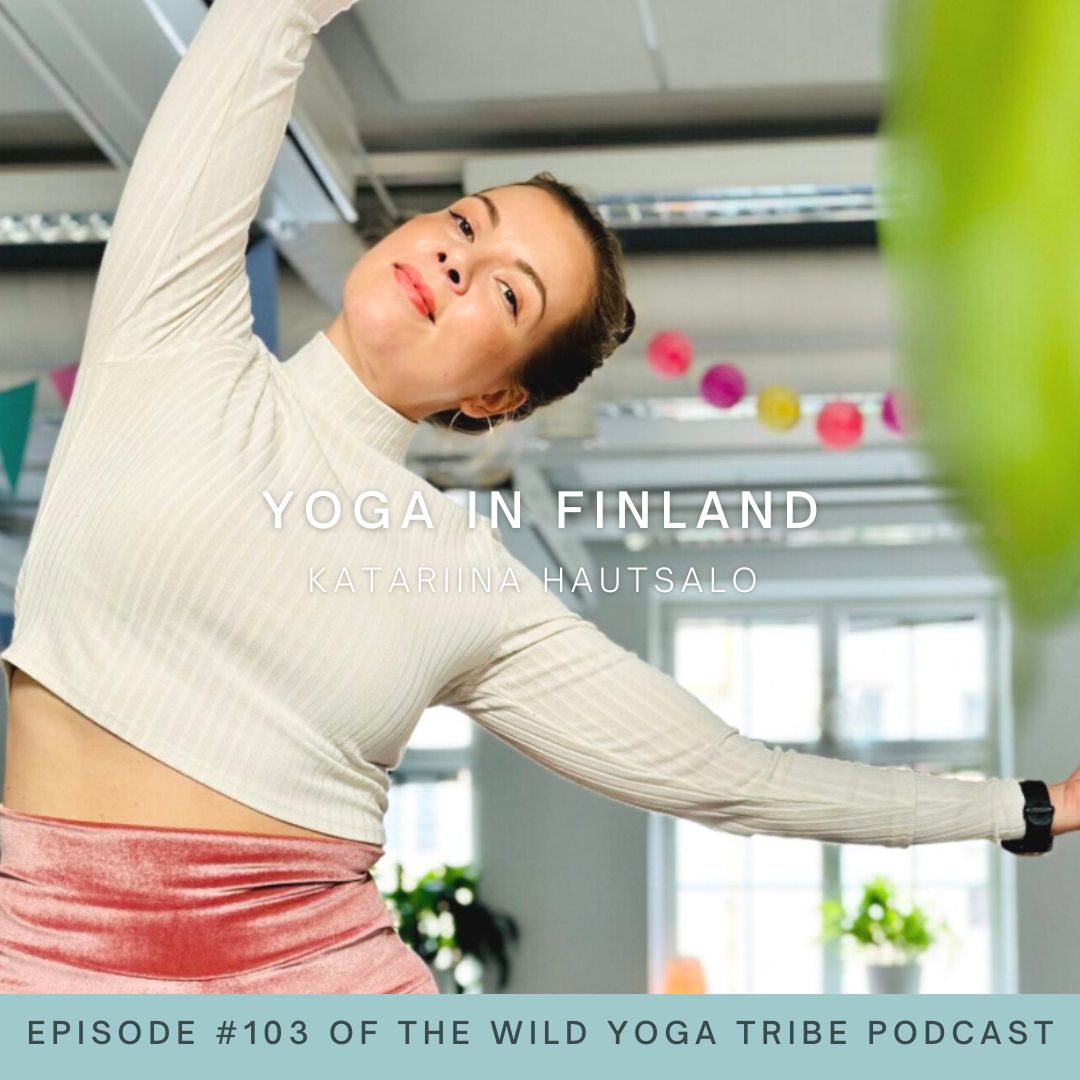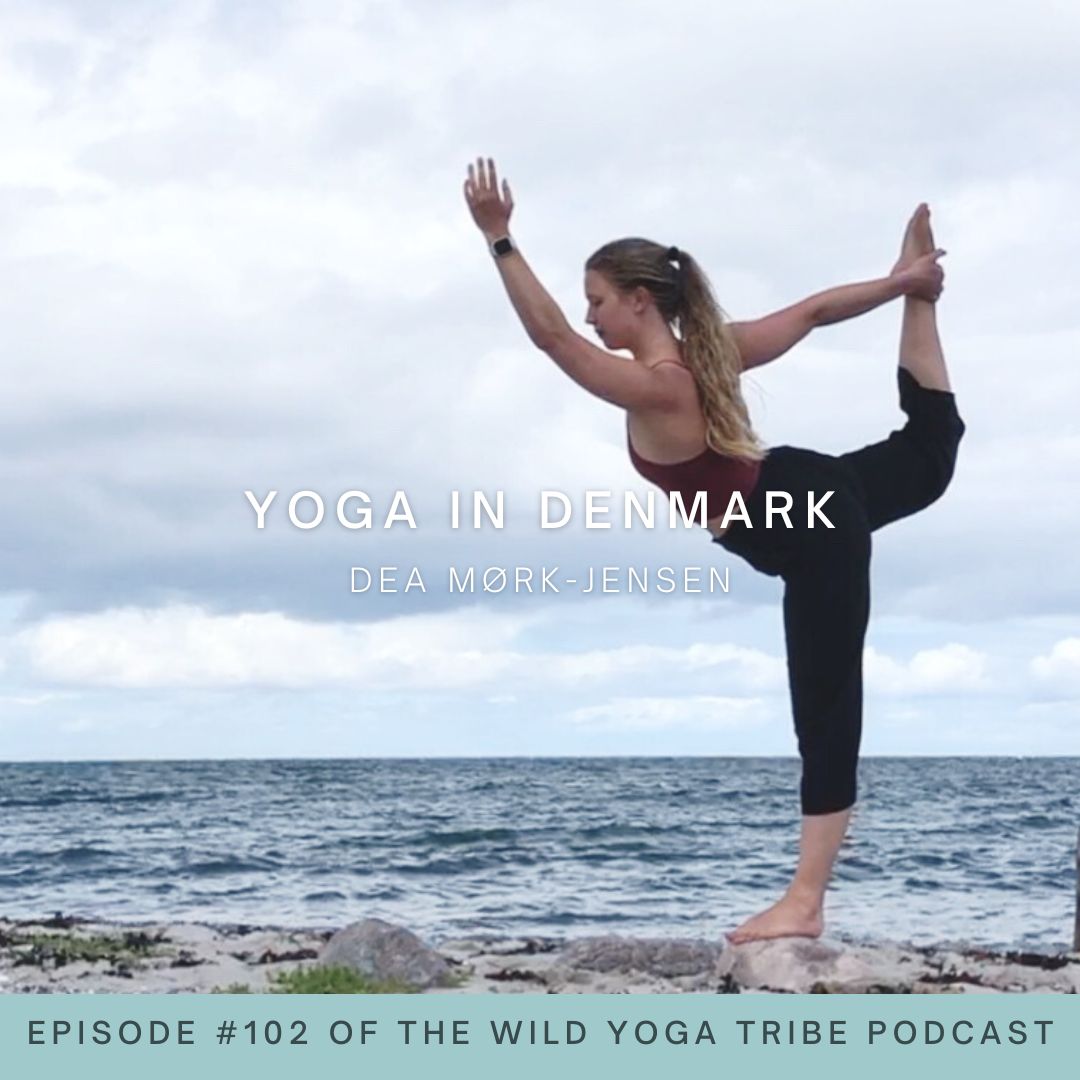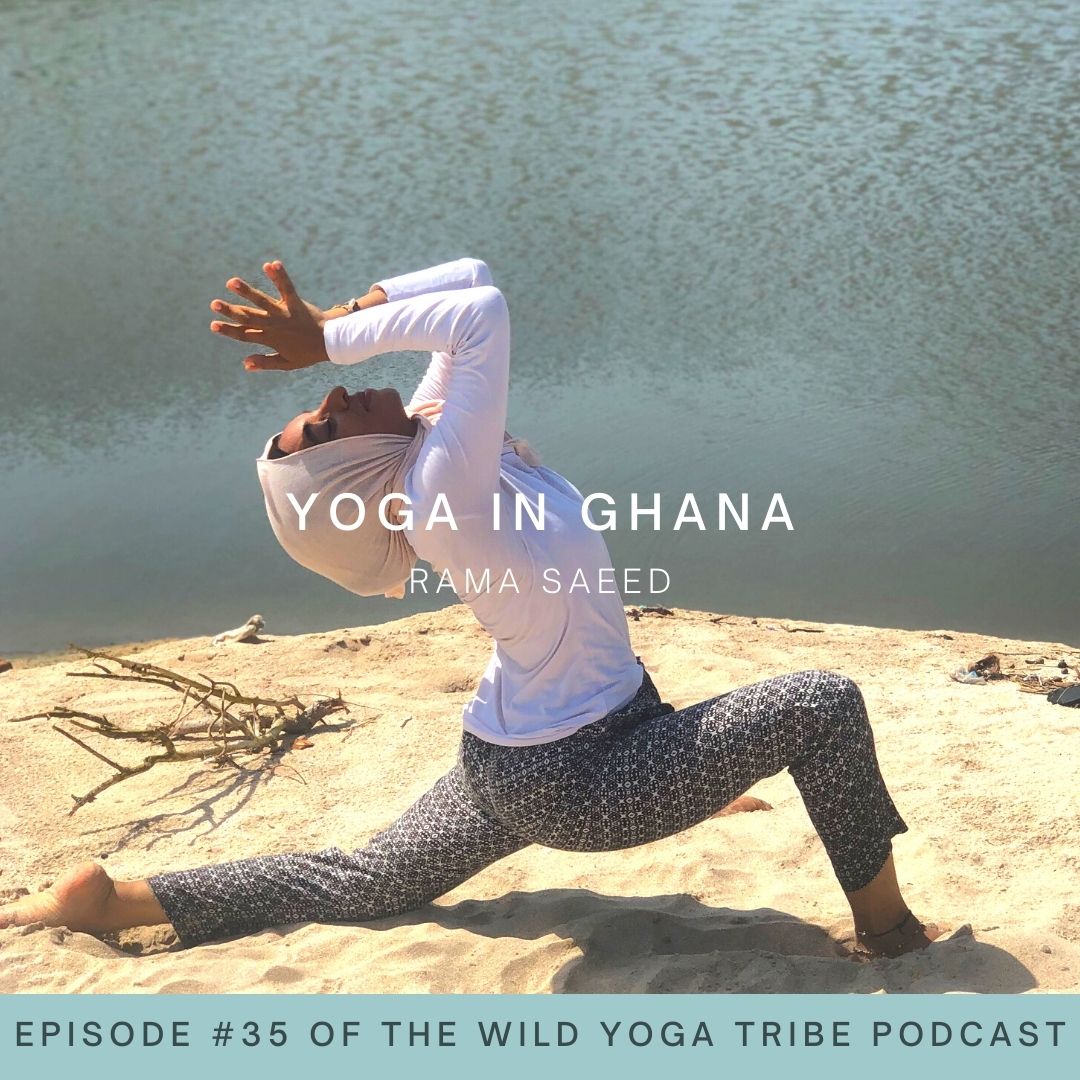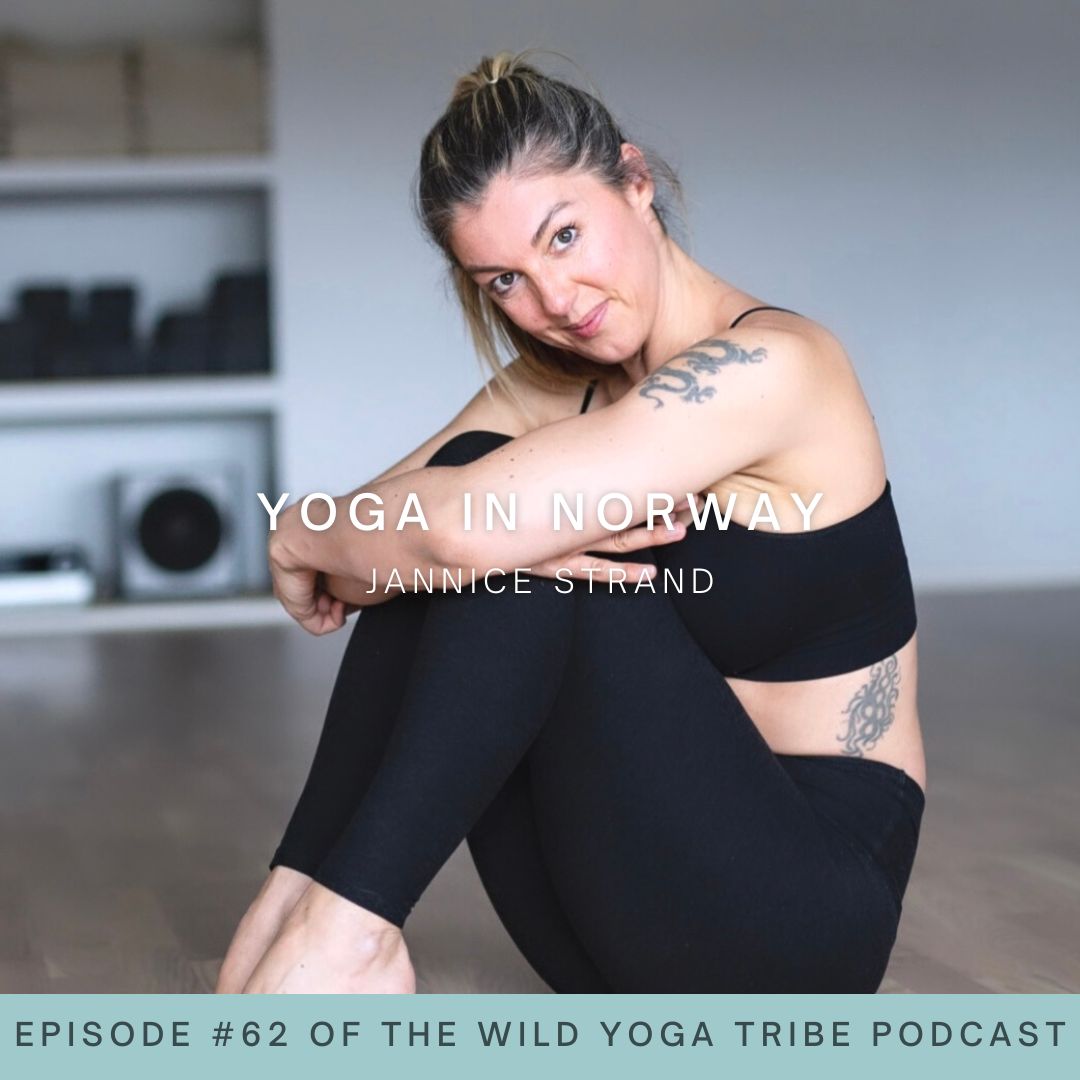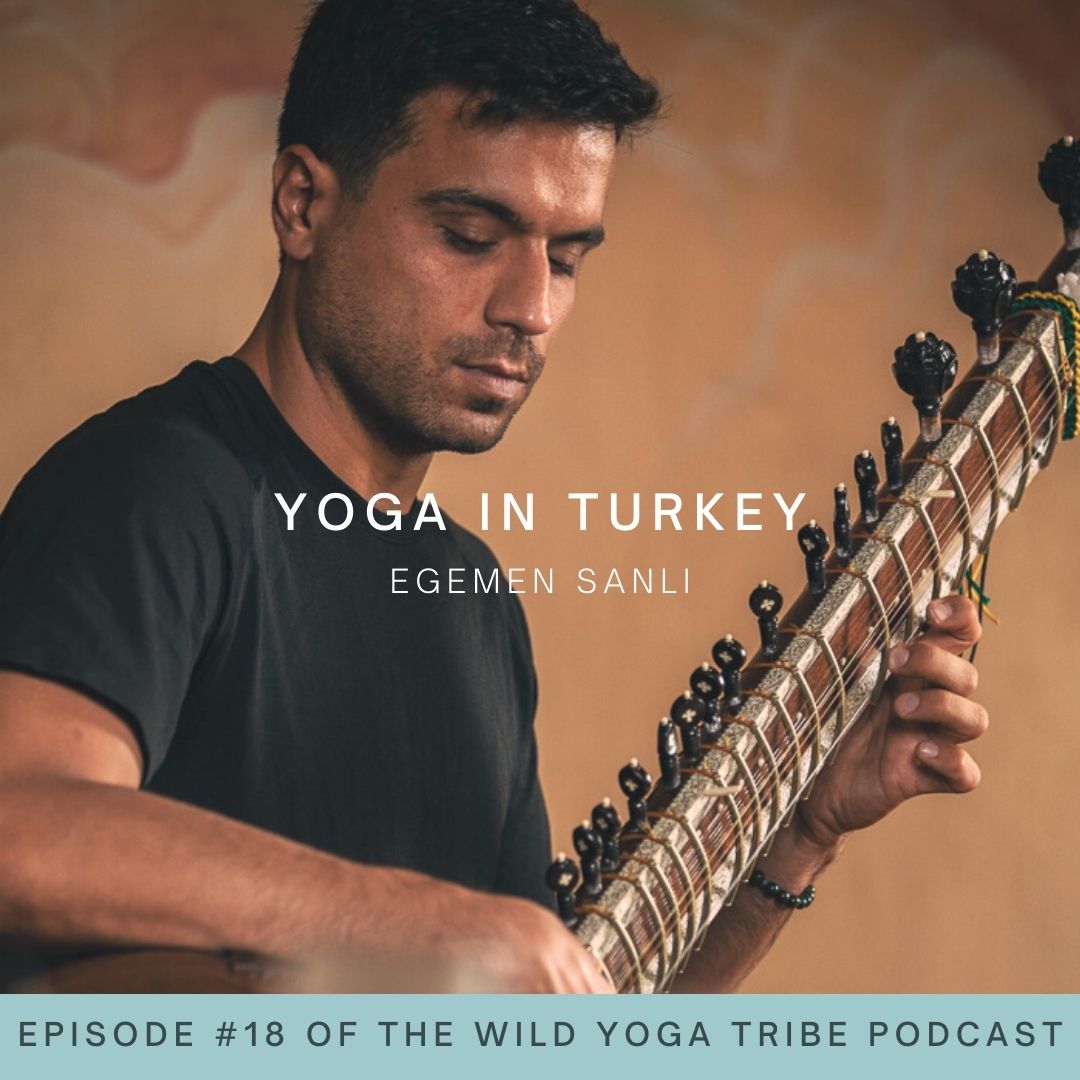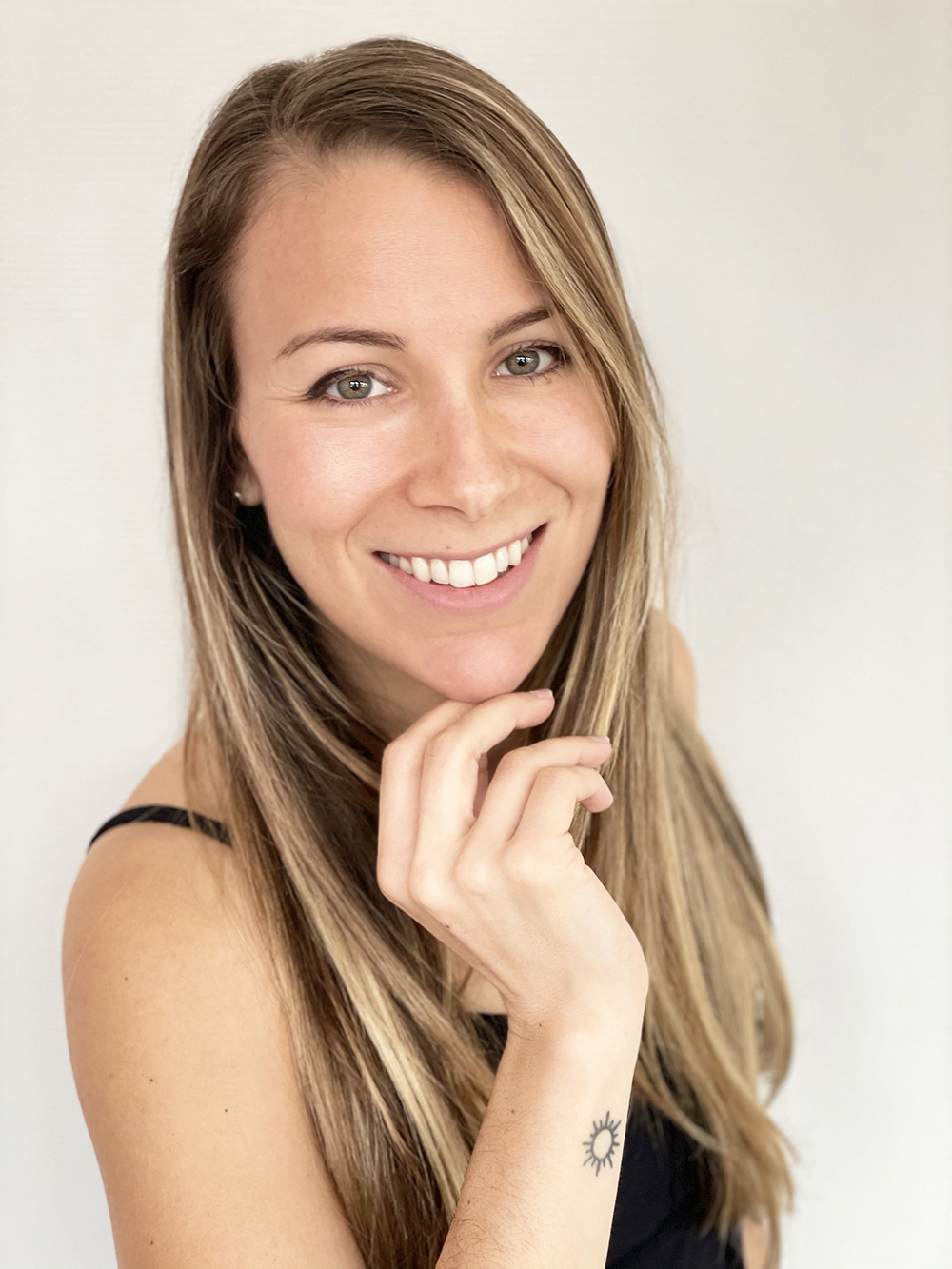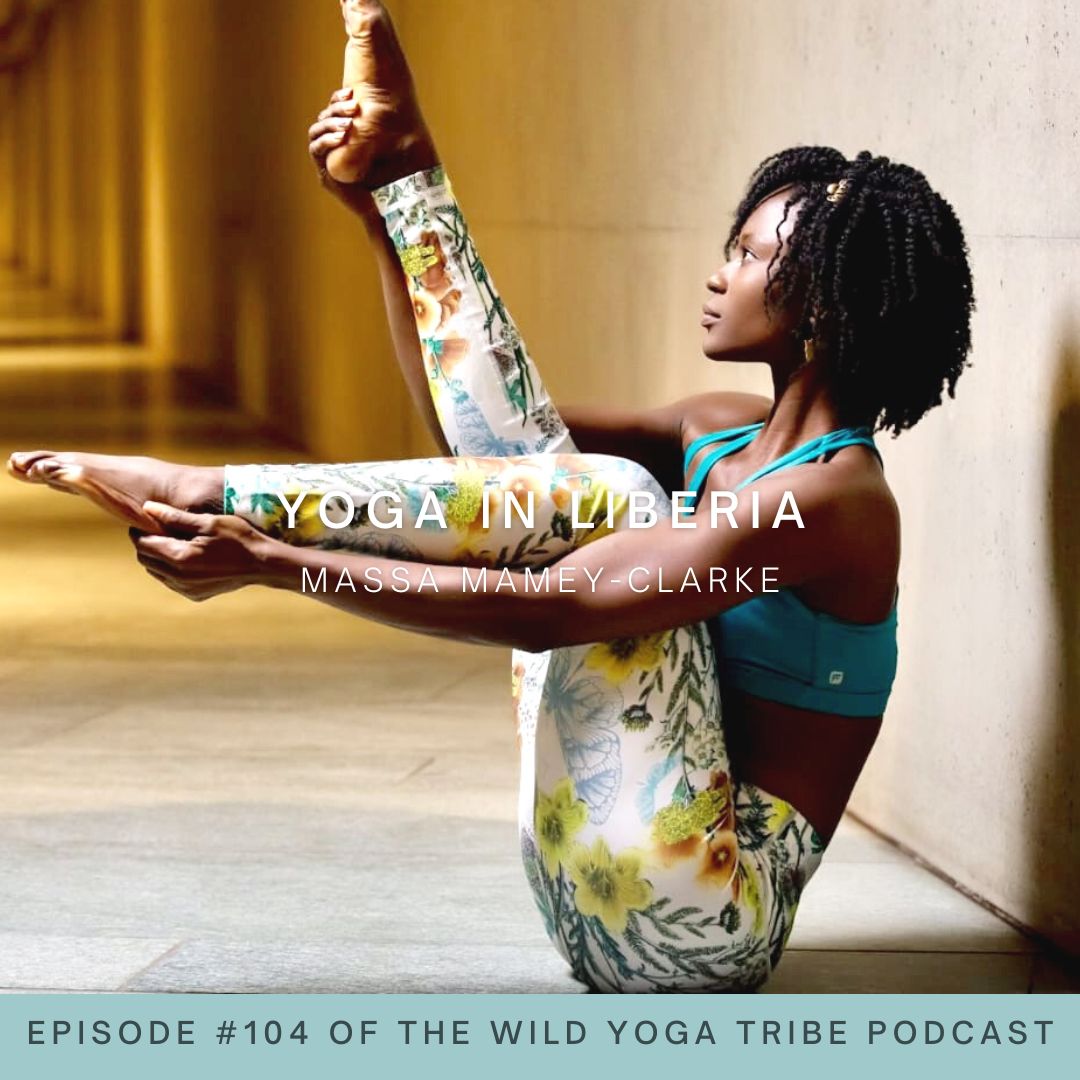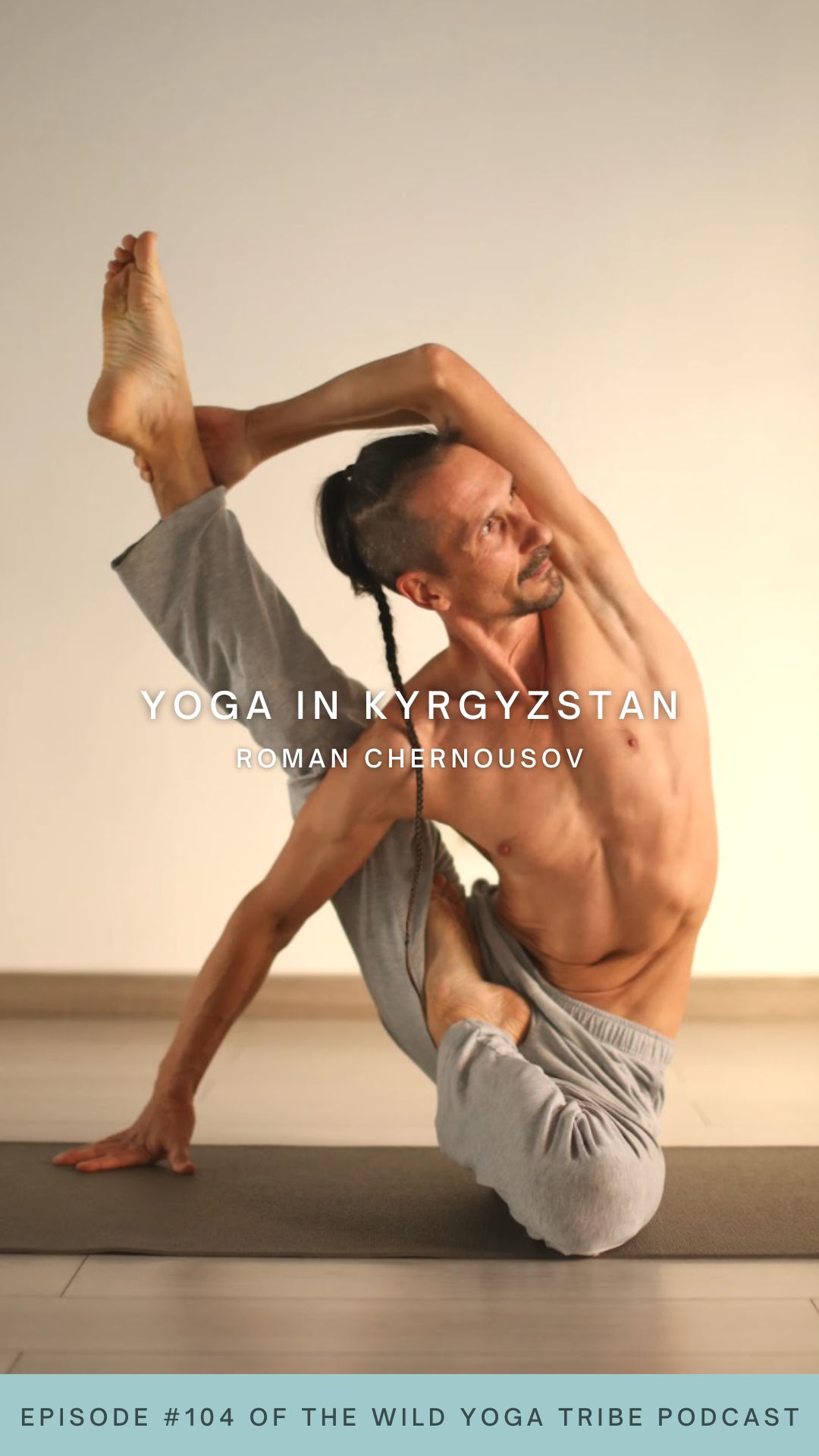
EPISODE #104 – YOGA IN KYRGYZSTAN
Meet Roman Chernousov
Meet Roman Chernousov, a yoga teacher from Kyrgyzstan, and discover the untold history of yoga in a land once shrouded in secrecy, as Roman shares his unique Yoga Mix System, blending diverse influences for a holistic approach to well-being. Welcome to yoga in Kyrgyzstan!
Wild Yoga Tribe Podcast Episode #104 – Kyrgyzstan’s Yoga Renaissance – Yoga in Kyrgyzstan with Roman Chernousov
Welcome to Episode #104 of the Wild Yoga Tribe Podcast! My conversation with Roman Chernousov, a yoga teacher from Kyrgyzstan, was fascinating as we took a deep dive into the history of yoga in Kyrgyzstan and how it was illegal because of how the government knew that it was such a powerful practice. Trust me, this story sounded like a movie! We also talked about Roman’s travels to Tibet and how he studied not just yoga but Kung Fu and Qi Gong as well. I hope that this conversation surprised you, delighted you, and made you more curious about yoga in Kyrgyzstan.
So if you’re looking to tune into a podcast episode that is all about yoga in Kyrgyzstan then this is the conversation for you.
Tell me more about Roman Chernousov
Roman Chernousov, yoga teacher from Kyrgyzstan followed a diverse athletic background in childhood and young adulthood, including wrestling and wushu. However, Roman found solace and healing in yoga and qigong after a serious illness in 1998. His extensive training, ranging from traditional Tibetan practices in Northern Tibet to courses in India and St. Petersburg, led him to develop the YogaMix system. Since 2007, Roman has been passionately imparting his knowledge, conducting yoga retreats, and shaping future yoga teachers through comprehensive courses, viewing yoga not merely as a profession but as a cherished lifestyle and a continuous path of self-development.
What to expect in the Yoga In Kyrgyzstan episode of the Wild Yoga Tribe Podcast
Discover the rich tapestry of yoga in Kyrgyzstan through the eyes and experiences of Roman Chernousov, a yoga teacher from Kyrgyzstan.
Roman’s connection with yoga began at the age of five when his father, defying the ban on yoga in the ’70s and ’80s, introduced him to the practice using books. These clandestine teachings revealed a world of asanas and breathing techniques, setting the foundation for Roman’s lifelong relationship with yoga.
Growing up with a passion for wrestling and Kung Fu, Roman found strength, discipline, and resilience in these pursuits. He emphasizes how these disciplines shaped his character, instilling in him the importance of daily practice, a lesson he later passed on to his yoga students.
Roman’s yoga journey took a profound turn after a severe illness in 1998. Facing physical traumas from martial arts, he turned to yoga and Qigong for recovery. Undeterred by the initial challenges, Roman’s daily practice gradually restored strength, leading him to develop the Yoga Mix System—an amalgamation of various yoga styles and influences.
Over the years, the yoga community in Kyrgyzstan has flourished. From a mere handful of practitioners, there are now over 200 yoga teachers in the capital of Kyrgyzstan, Bishkek, alone. Roman’s dedication to teaching and the growing interest in yoga reflect a remarkable transformation of yoga in Kyrgyzstan.
Kyrgyzstan, once shrouded in secrecy, is now a thriving hub for yoga practitioners, fostering growth, healing, and unity.
Favorite Quote From Roman Chernousov
“ I understood that yoga is my way. The thing that I should do. that I should practice. It’s a great healing tool, healing power that I should give to other people.”
What’s in the Yoga in Kyrgyzstan episode?
Feel like skimming?
The story of how yoga was illegal in Kyrgyzstan
What is the YogaMix system?
Influences of Wrestling, QiGong, and Kung Fu
Yoga as a Healing Journey
The underground era of yoga in Kyrgyzstan and the rise of yoga in Kyrgyzstan
Connect with Roman Chernousov
https://instagram.com/yoga_ro_om
Support the podcast:
https://www.patreon.com/wildyogatribe
Want more?
https://wildyogatribe.com/thepodcast/
Everything you need is just one click away! Check out all the resources here: https://linktr.ee/wildyogatribe
PODCAST TRANSCRIPTION
Read + Reflect + Respond
Wild Yoga Tribe Podcast Episode 104 – Yoga in Kyrgyzstan with Roman Chernousov Transcript
[00:00:00] Lily Allen-Duenas: Namaste family and welcome back to the Wild Yoga Tribe podcast. Today is a beautiful day and I am so happy to welcome Roman Chernousov onto the show today along with his wife, Maria Chernosova. They are, and Roman is, a yoga teacher from Kyrgyzstan, and his wife is his translator today with us, as Roman mainly speaks Russian.
So I’m excited to welcome Roman and Maria onto the show today. So Roman Chernosova followed this diverse athletic background in childhood and young adulthood, including wrestling and Kung Fu. However, Roman found solace and healing in yoga and Qigong after a serious illness in 1998.
And he actually went to Northern Tibet, and took courses and studied in India and Russia as well. And that led him to develop the Yoga Mix System. So I’m really excited to hear more about his journey as well as the yoga mix system, something I don’t know about. So thank you so much, Roman and Maria, for being with me on the show today.
[00:01:11] Roman Chernousov: Hello Namaste. We are very glad to be with you today.
How did yoga first come into your life?
[00:01:16] Lily Allen-Duenas: So excited. Thank you both. And I’d love to hear how yoga first came into Roman’s life.
[00:01:22] Roman Chernousov: [00:01:30] The first time I got acquainted with yoga as a system when I was five years old. With the help of my own father, actually my father initiated me into the yoga [00:03:00] system. At that time in the seventies, eighties yoga was banned in our country. And my father illegally tried to practice yoga with some poorly printed books translated from English. And it was interesting for me as a child because my father. Showed me some weird asanas belly vacuum, breathing systems, and so on. They were rather easy for me as a child.
How did wrestling and kung fu influence yoga?
[00:03:33] Lily Allen-Duenas: He’s so lucky to have had his father teach him yoga at such a young age and to become acquainted and interested in something that I feel like so many people didn’t get interested in or introduced to until later. So I also know that Roman has a background in childhood in wrestling and kung fu, also called wushu, and other athletic pursuits how do you think that has influenced his approach to teaching yoga?
[00:04:01] Roman Chernousov: Many young boys I was more interested in, wrestling and wushu. It they were more popular around among boys, and I started practice these disciplines. They made me strong. They made my body strong and my spirits strong. They taught me discipline everyday labor. Make trainings every day without missing. And of course when I became a yoga teacher I learned my students to practice every day to go step by step to work out their bodies and never be worrying of some difficulties on their yoga journey.
How did yoga and qigong help you on your healing journey?
[00:05:56] Lily Allen-Duenas: Wow, yes. Discipline is incredible to learn, [00:06:00] especially as a child and it seems like he had so much focus. As well, just discipline and focus and such a passion for movement. And I know that definitely aligns itself with yoga and with kung fu and Qigong and all the things that he was studying.
So I do know from reading about you, Roman, that yoga and Qigong, you found that after healing from a illness. Could you elaborate on how those practices contributed to your recovery?
[00:06:28] Roman Chernousov: Only a few people know this story. Actually, when Roman was years old, he [00:07:30] got seriously ill. On the one hand, he had a lot of physical traumas because of martial arts. and wrestling, and generally, yeah, he got ill seriously, doctors couldn’t help him they just didn’t know what to do, and he was lying down completely and one day he recalled about yoga he found that printed books From his father and he started reading them. He Stood up from his bed and tried to do simple asanas the simplest one But they were very hard for him that time. He just couldn’t stand up for a minute even but As he’s very focused person and he’s got a lot of discipline. He practiced every day, from day to day, and he felt that strength, power, energy is getting back to his body, and from day to day he could do more asanas, more complicated asanas, and after that he was very lucky to meet a teacher, a guru.
[00:08:49] Lily Allen-Duenas: I know he was pretty young.
Roman Chernousov: Correct? Yeah, he was 19 only.
Lily Allen-Duenas: Wow, that must have been so hard. And remind me, I believe that at that time, [00:09:00] the books on yoga were illegal to have, right? They were banned in your country.
[00:09:05] Roman Chernousov: in our country yoga was illegal, like 1980s and it was banned and people copied books. and gave them to each other to learn these eastern practices like yoga, Qigong, Wushu. Only after 1990s, I think yoga became legal. Can you
[00:09:32] Lily Allen-Duenas: Do you know why it was illegal?
Why was yoga illegal in Kyrgyzstan?
[00:12:02] Roman Chernousov: Ok, it is a very interesting story, probably partly a legend, we don’t actually know. But people say that first, in the early USSR, yoga was actually legal and people practiced it, it was okay. Indian yoga teachers were invited to work with USSR cosmonauts who flew to cosmos on the rockets. And these yoga teachers trained them to breathe to be strong enough to go to cosmos. And there was one man who was an ocean researcher and he also practiced yoga different breathing systems meditations. And he practiced for a long time. And that man had got a dream as he was a notion researcher. He dreamed to meet Jacque Costeau from France and work with him. But he couldn’t do that. Because it was prohibited to leave USSR territory and go to France. He made a very dangerous thing. He bought tickets to boat trip, and to Philippine cruise, to Philippine islands and back. And [00:13:30] when the ship was next to Philippine Islands, as he was an ocean researcher he counted that it is the closest point to swim to Philippines Islands by himself without any boat and so on. And he just jumped from the ship and swam to the Philippine Islands, but he he was a little bit mistaken and he had to swim for more than three days. He stayed in the open ocean he used all his breathing techniques, meditation to warm up himself in cold waters. After this journey, he wrote a book. And he wrote that he even met sharks, and they were ready to eat him, but he imagined, he just felt himself a fish that can swim away from the shark, and he really swam away, he reached Philippine islands, and from that islands he traveled to France, and he’s When this dream came true, he met Jaque Costeau and worked with him. But the government understood that practices of yoga, practice of yoga is a very powerful thing and it could be dangerous to let all the people practice this system. So after that, [00:15:00] yoga was banned.
[00:15:02] Lily Allen-Duenas: I’m so glad I asked that question and that Roman has the knowledge to explain all that happened because it’s so dramatic, it sounds like it could be a movie. I’m very grateful that yoga is no longer illegal, and I’m also grateful to know that And the government even thought that yoga and knew that yoga was such a powerful practice that they had to, or they wanted to not have people have that power.
And that’s sad, but it is incredible that they acknowledged how powerful the practice of yoga is.
[00:15:35] Roman Chernousov: Yes, here we can see how powerful yoga is if you practice every day.
[00:15:40] Lily Allen-Duenas: Yes, with the dedication and the discipline. So it’s a perfect segue Maria, I’d love to ask Roman, what is this yoga mix system that he’s developed? I’d love to hear more about it.
What is the Yoga Mix System?
[00:18:38] Roman Chernousov: Actually, this yoga mix system doesn’t exist worldwide. My trainings in the Tiger and Dragon school of the Northern Tibetan style influenced it a lot. Influenced me and my trainings a lot. And when I started teaching yoga, and came to a well known yoga studio in our country. thEy asked me what type of yoga do you teach? And I answered simply hatha yoga. But they answered there are a lot of yoga teachers, and everyone teaches. Hatha yoga. What is the difference of your own style? Because there are teachers who practice, for example, fitness yoga or Kundalini yoga. What [00:19:30] is your difference? And I answered that on my classes, I mix a lot of styles. I mix classical Hatha Yoga with QiGo ng because I like QiGong as a system I like Asana from QiGong and I include them as well. And even sometimes I use Kundalini yoga to warm up my students. And sometimes I use adjustments of Asana from Iyengar style because I also learned it And the owner of that well known yoga studio was listening to me and said, Okay, it’s a mixture, let’s call it Yoga Mix. And that’s how Yoga Mix appeared, but today I’ve got many students who learned from me and they called their style which they teach A yoga mix and that’s how yoga mix system appeared.
[00:20:33] Lily Allen-Duenas: Wow. That’s incredible that it all stemmed from somebody asking him, what do you teach? And Hatha not being a good enough answer, it sounds like.
[00:20:41] Roman Chernousov: Yeah.
[00:20:42] Lily Allen-Duenas: What I love, too, is that Roman has studied in Northern Tibet and India and St. Petersburg. Especially Northern Tibet for me. That is incredible. It feels like a place almost no one gets to go to these days. So since Roman’s training is so diverse, I was wondering how these [00:21:00] experiences have enriched his teaching styles, and more specifically what aspects of these different cultures and teachings do he, does he incorporate in his classes?
What was it like studying yoga in Northern Tibet, India, and St. Petersburg? (English Answer)
[00:24:42] Roman Chernousov: Okay, so actually are Roman studied a lot and different Absolutely. Systems. Starting from Northern Tiberian system of QiGong. He also started at St. Petersburg Yoga Flow school and in Ukraine. He also started from Andrew Sadisky. He is yoga 23. system, a rather popular system and as well he started in India in Rishikesh, a Himalayan yoga and when after his illness, he started from Northern Tibetan system, but as he says all these systems they all sound rather different. [00:25:30] Actually, they have got one basis, one root. When you practice a lot, you start understanding that they are similar in their basis. And in this northern Tibetan school, the teacher, which Roman met after his illness first gave them some wrestling techniques which should strengthen their bodies. And Roman was the student, the head of the school which is called Tiger and Dragon School for seven years before His teacher gave him secret Tibetan practices which strengthened his body so much that he could swim in winter in cold mountainous river without any coldHe could walk barefoot in the winter, and so on…. Tibetan style of Thich Nhat Hanh and then the secret practices he practiced for three years absolutely every day because if he only missed one day Then he should have started from the very beginning, even though he practiced, for example, one or two years before. So [00:27:00] this school is very strict. aNd after that Roman says that yoga flow system, which he learned in St. Petersburg, gives him a different point of view for yoga practices. He understood that it can be softer, he understood how to work with the beginners, and how to adapt his strict practices for the beginners, what to start with, and when he practiced in Ukraine, yoga 23 system, as also Roman is so glad that he had an opportunity to practice with Andriy Siderivsky. And also he uses this practices in his own class. But he said that Himalayan school in Rishikesh He took all his yoga knowledge and united them. In Rishikesh he understood how to unite all of his knowledge and that his practice that he makes it right way.
Like when his Indian teacher told him you are doing it right way. He was happy. After finishing his studies in Himalayan Yoga School, Himalayan Yoga Academy it is called. after one year of practicing there he was invited as a teacher and he worked as a teacher.
[00:28:25] Lily Allen-Duenas: Amazing. I’ve also studied yoga in Rishikesh and it was so [00:28:30] powerful. It’s amazing to hear how that was such a place of acknowledgement and transformation and how it all came together because Rishikesh definitely holds a special place in my heart as well. So Maria Roman, at this point, I would love to ask the question that I always ask every guest on the podcast. What is your personal definition of yoga? What does yoga mean to you?
What does yoga mean to you? (English Answer)
[00:29:17] Roman Chernousov: Roman says that for him yoga is a lifestyle at his whole life. When he first traveled to Rishikesh to Yoga Academy he when he first came to that town, he felt like he’s at home. And there I understood that yoga is my way. The thing that I should do. that I should practice and that it’s a good tool for self understanding and that’s a great healing tool, [00:30:00] healing power that I should practice myself and give to other people to make them healthier. And I’d like to improve myself in yoga every day during my whole life. And yes it’s the thing that I live with every day.
[00:30:16] Lily Allen-Duenas: I love that. I love that it is what he lives with every day. I would also love to hear what is yoga in Kyrgyzstan like? In Kyrgyzstan, and I know I’m not doing the best job pronouncing it, but is it popular, growing? I know it was illegal in the past, but how did it, after it was made legal, did it continue to grow? And today is it really flourishing? I’d love to hear a bit of the history.
What is yoga in Kyrgyzstan like? (English Answer)
[00:34:11] Roman Chernousov: bEfore 1990s, yoga was not actually banned, officially banned, but there was very little information about it, and people just couldn’t find information about it, about practices. [00:34:30] And after 1990s, when USSR disappeared, and Our country, Kyrgyzstan, became independent. People started getting more and more information about yoga and other eastern practices. people in time, people were not very rich and Most people couldn’t afford traveling abroad to learn from well known teachers. onLy a few one could travel abroad and they brought here fantastic knowledge, fantastic for that time. They started sharing this knowledge about yoga practices, how to do that. Roman says that time was very romantic because it was amazing to find some new information and practice it on yourself. whEn Roman became a yoga teacher and late 1990s early 21st century, in our city there were only like five or six yoga teachers. Can you imagine that for the whole city? We live in the capital of Kyrgyzstan in Bishkek city. And now it’s a rather big city.
There is about one million [00:36:00] people living here. AnD there were only 5 or 6 yoga teachers and maybe 1 or 2 yoga studios. And people were not very interested in yoga. When Roman started and when he had 5 or 10 people in his group, he was happy because he considered it a big group. moStly there were women, because men didn’t practice at that time at all. But now Roman is teaching yoga, he has been teaching yoga for more than 20 years, for now, and yoga community is raising now there, there are More than 200 people teaching yoga only in our city. And more and more people every day get interested in yoga asks for some teaching courses.
There are a lot of new yoga studios which had opened last five years actually. AnD men also started practicing yoga in the groups which didn’t happen before.
[00:37:11] Lily Allen-Duenas: Wow, thank you so much for painting that picture and sharing with us the trajectory, the history of how yoga has developed. I would also love to hear about what is Kyrgyzstan as a country. Perhaps maybe, share something about its history or geography or culture, I know that our [00:37:30] listeners, and me included, we might not know that much about your country. So please introduce it to us.
What is Kyrgyzstan like as a country? (English Answer)
[00:39:12] Roman Chernousov: Kyrgyzstan is a very interesting country. It is situated in Central Asia. it Is surrounded by big mountains. And the territory is mostly mountainous. The nature is very beautiful in Kyrgyzstan and sometimes it is even called small Switzerland because nature is fantastic. wE’ve got on this small territory of our country, we’ve got everything. We’ve got a fantastic, well known mountainous lake called Issyk Kul, which means a warm lake because it is never frozen even in winter though it is situated in the mountains and in winter it is all snowy, but lake is never frozen. Because it is very salty. Not very salty. We swim in Issyk Kul. It’s okay, but salty enough not to get frozen. Also, we’ve got a small desert in our country. We’ve got fantastic big mountains. many hikers from all around the world, for them, for this time it’s well known, because they come here to climb [00:40:30] our big mountains, big snowy mountains. Also, we’ve got forests, and really, we’ve got tundra. Very beautiful, very different nature it is very interesting to travel around Kyrgyzstan. I should mention that it is before it was situated on the Great Silk Road if and we’ve got a lot of places of power here, and even Buddhist monks.
People from different parts come to Kyrgyzstan to visit these places of power, and that’s why I host, Roman hosts, retreats, yoga retreats, people from Kyrgyzstan, Kazakhstan, neighborhood country, some people from Russia come to his yoga retreats. It is very important for us to practice yoga on the bank of our Issyk Kul lake because it is very beautiful in summer.
It is warm enough, like 30 degrees above zero and we can swim. winter could be cold. For example, today it is It’s 20 degrees below zero outside and weather changes very fast in our country. We should be prepared for everything, especially when we go hiking to the mountains.
[00:41:58] Lily Allen-Duenas: Oh, amazing. I really appreciate [00:42:00] you sharing all of those stories and details about your country. And I’m so grateful for this time that we’ve got to spend together. And Maria, you did an amazing job translating. I’m so appreciative of you.
[00:42:12] Roman Chernousov: We feel fantastic. Thank you, Lily, for this experience. And yes, for us, it’s a new experience, but it was very relaxing. Thank you for the atmosphere. I was very happy to meet you here.
[00:42:27] Lily Allen-Duenas: Thank you so much Roman as well for being here. I really appreciate you sharing your wisdom and knowledge and experiences with us. It is vast and I feel very grateful to have gotten to know you here on the show.
[00:42:40] Roman Chernousov: Okay. Thank you very much.
Wild Yoga Tribe Podcast Outro
[00:42:43] Lily Allen-Duenas: Thank you so much for tuning in to this episode of the Wild Yoga Tribe podcast. My conversation with Roman Chernousov, a yoga teacher from Kyrgyzstan, was fascinating as we took a deep dive into the history of yoga in Kyrgyzstan and how it was illegal because of how the government knew that it was such a powerful practice.
Trust me, this story, it sounded just like a movie. We also talked about Roman’s travels to Tibet and how he studied not just yoga, but Kung Fu and Qigong as well. I hope that this conversation surprised you, delighted you, and made you more curious about yoga in Kyrgyzstan. If you’re looking to tune into a podcast episode that is all about [00:43:30] yoga in Kyrgyzstan, then this is the conversation for you.
Thank you for listening to the Wild Yoga Tribe podcast. Be well.
Copyright © 2023 Wild Yoga Tribe LLC. All rights reserved. Transcripts are generated using a combination of speech recognition software and human transcribers, and may contain errors. Kindly check the corresponding audio before quoting in print to ensure accuracy.
The Wild Yoga Tribe, LLC, owns the copyright in and to all content in and transcripts of the Wild Yoga Tribe podcasts, with all rights reserved, including right of publicity.
What’s Okay
You are welcome to share an excerpt from the episode transcript (up to 500 words but not more) in media articles (e.g., The New York Times), in a non-commercial article or blog post (e.g., Elephant Journal), and/or on a personal social media account for non-commercial purposes, provided that you include proper attribution and link back to the podcast URL. For complete transparency and clarity, media outlets with advertising models are also welcome to use excerpts from the transcript per the above.
What’s Not Okay
No one is authorized to copy any portion of the podcast content or use Lily Allen-Duenas’ name, image or likeness for any commercial purpose or use, including without limitation inclusion in any books, e-books, or on a commercial website or social media site (e.g., Instagram, Facebook, etc.) that offers or promotes your or another’s products or services. Of course, media outlets are permitted to use photos of Lily Allen-Duenas from her Media Kit page or can make written requests via email to receive her headshots folder.
